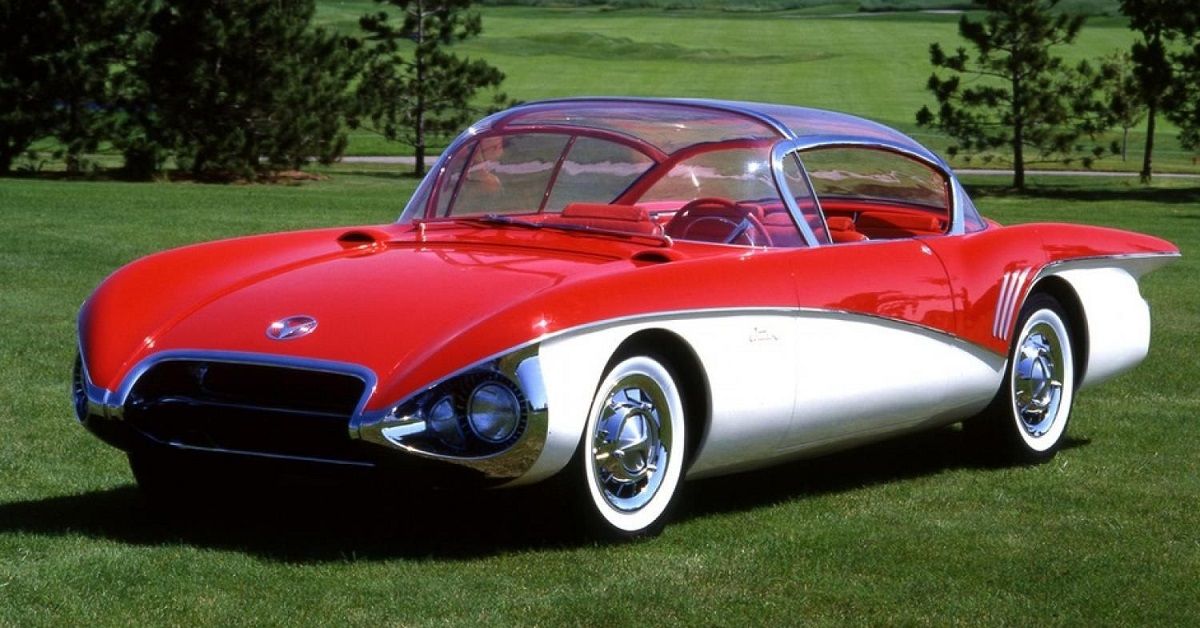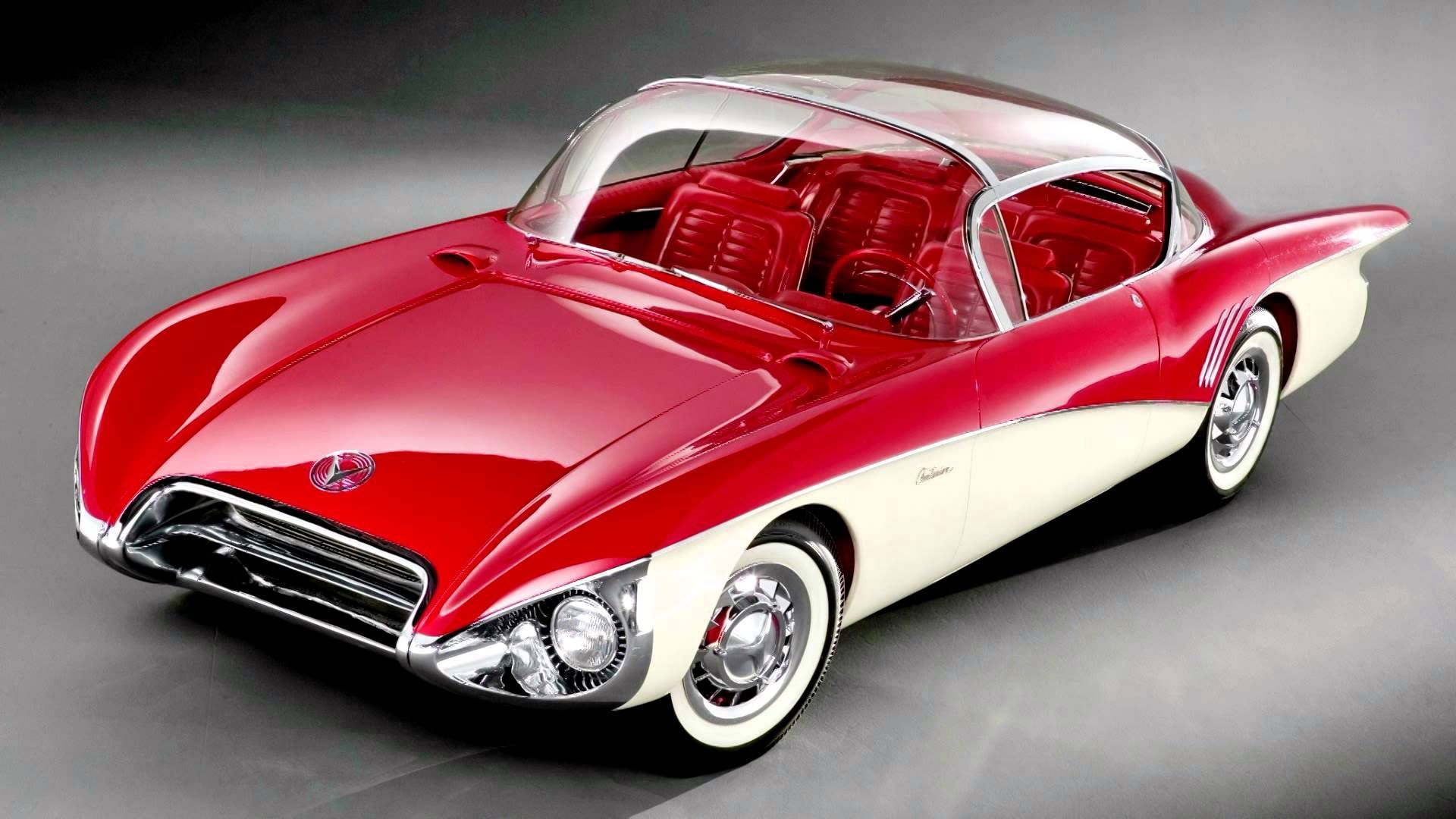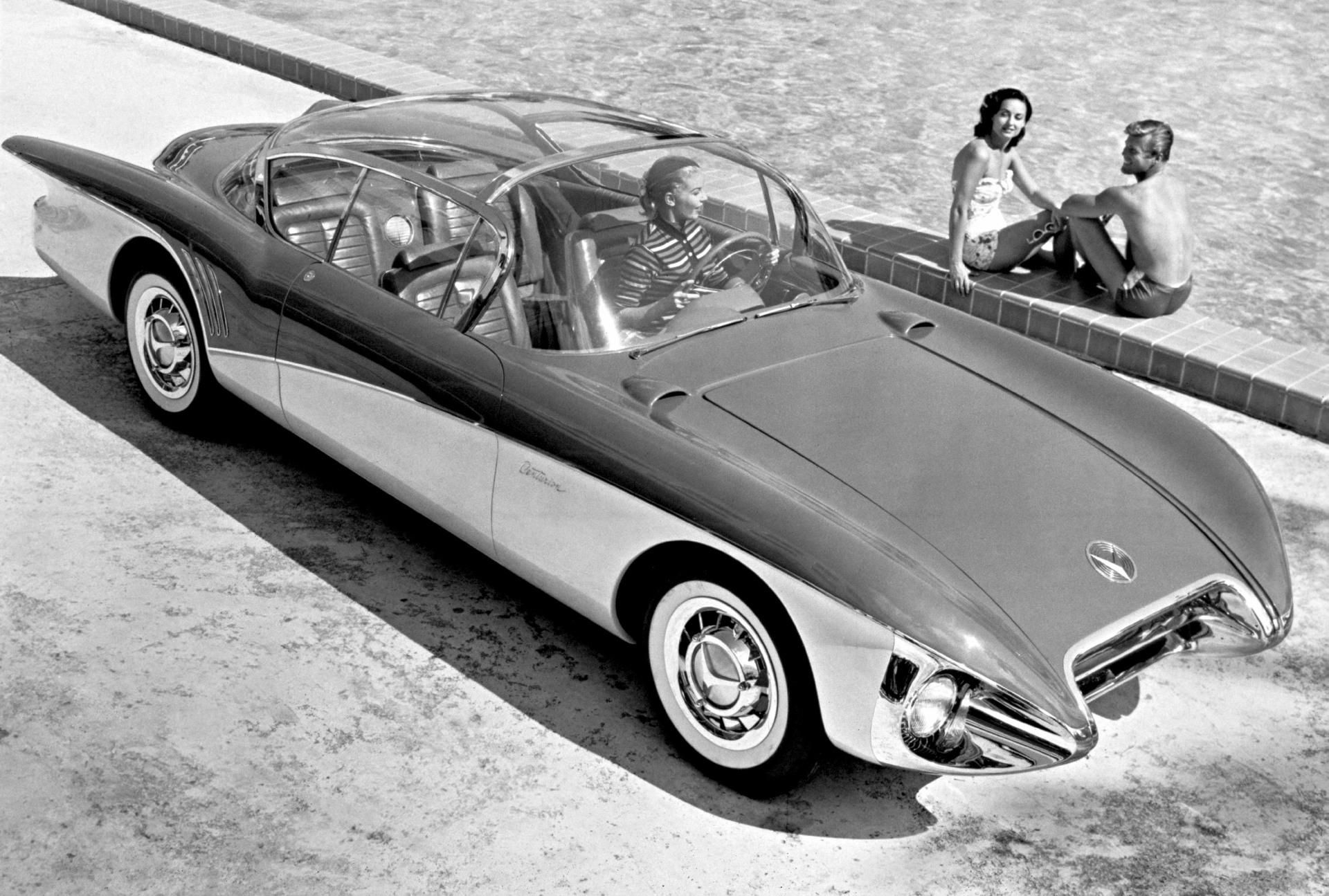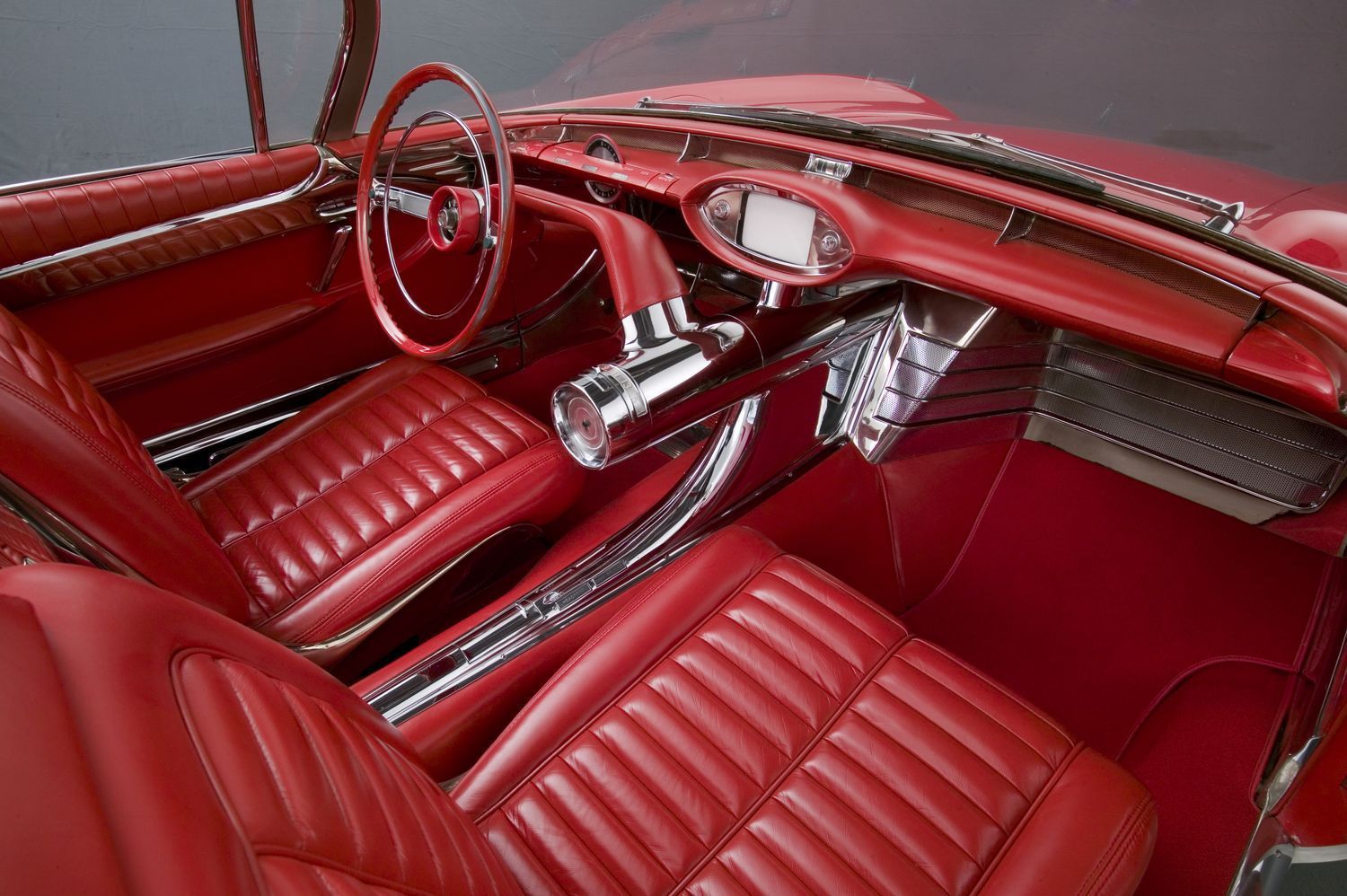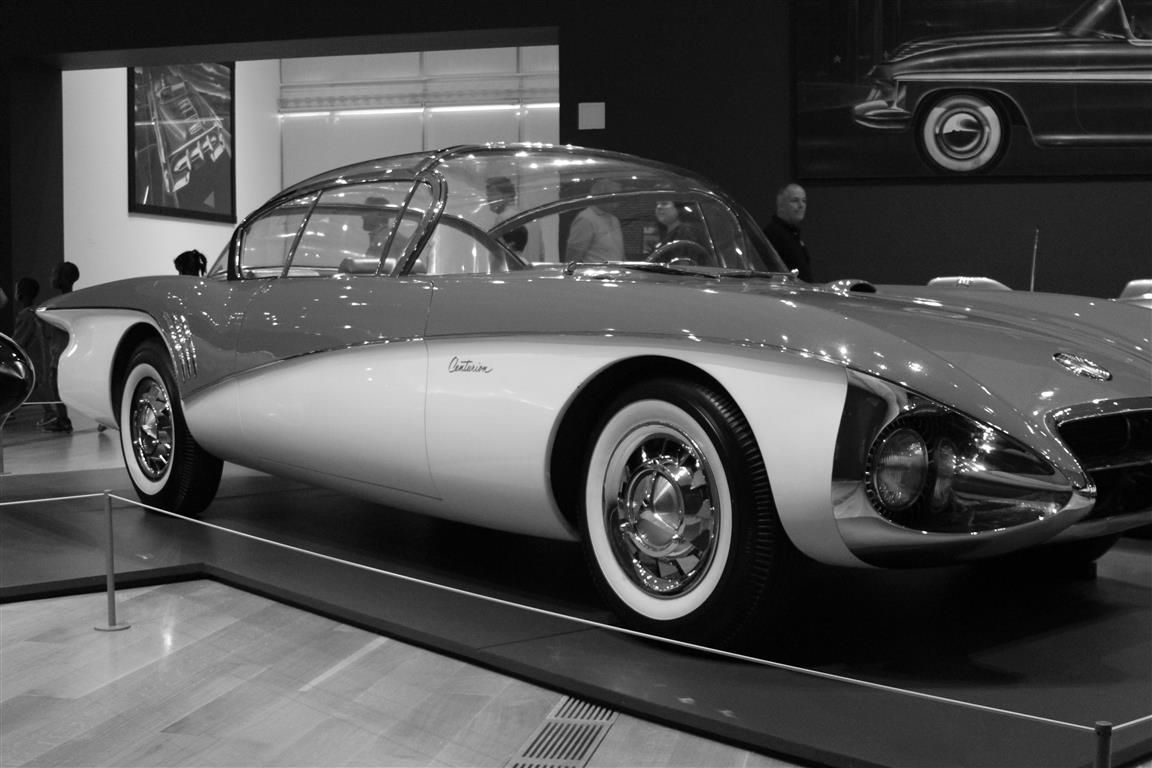The 1956 Buick Centurion was a concept car that showcased several features that were either predicting the future or adapted by automobile companies at the time for their latest lineup.
The Centurion debuted to the public at the 1956 General Motors Motorama Show. It had a V8 engine that could produce 325 horsepower. It sat four passengers and the seats automatically slid forward when the doors were opened to allow easier entry and exit for passengers. It had an unusual design, though concept cars at the time shared that trait.
This car also introduced the earliest concept of both rearview cameras and the sunroof, and it allowed bucket seats to become a mainstay for American cars, which had previously only used bench seats. It had two tones- red and metallic- and this design scheme applied to both interior and exterior.
The interior body used fiberglass construction and it had a bubble window and roof combination, with the windows unable to be opened the way windows open in modern-day cars. Many ideas would soon be used by both Chevy and Buick for their current automotive models.
Read on to find out more about how the 1956 Buick Centurion Concept Car denoted the future of automotive practicality and design without fully intending to do so.
It Had Bucket Seats Before Bucket Seats Were A Feature
The 1956 Buick Centurion accurately predicted the future of automotive vehicles in so many ways. One among them was bucket seats. This car displayed bucket seats, which were uncommon in the United States at the time. However, bucket seats were commonplace in European cars by that point, and they came standard.
That said, the United States still used bench seats for their cars at the time, and it was after this model was on display did automobile companies begin to rethink their approach, and bucket seats become a mainstay in American cars.
Another new feature was headrests, which also were not part of American cars at the time. The Buick Centurion totally revamped and revitalized the way American cars had seats and the way American automobile manufacturers looked at installing seats.
The car also had a bubble dome for the windows and roof. While this idea was not directly adapted into American cars, it became the basis for the modern-day sunroof and moonroof. However, one thing the Centurion couldn't do was open up windows to let in the breeze like drivers do today in their modern cars.
The Rearview Camera Debuted Here
A rearview camera may become more common in newer cars today, but the 1956 Buick Centurion was one of the first cars to implement that technology. Of course, it looked totally different back then, but the use of it sparked the idea. Chuck Jordan, an automotive designer in the 1950s, came up with the concept that a rearview camera could be useful both for backing up and for seeing what's behind the vehicle.
Jordan rigged a television camera above the trunk logo on the back of the car, allowing this camera to transmit real-time images from behind the car for drivers to view on the front dash. While this is similar to today's infotainment screens, keep in mind that the technology back then was a lot less advanced and a lot lower quality.
Still, at the time, the idea was both innovative and groundbreaking. It is because of this camera that the 1956 Buick Centurion lacks mirrors. Luckily, mirrors have proven practical enough that they remain on vehicles to this day.
Airplane Features Were Integrated
This vehicle also made the move to integrate ideas and designs from an airplane cockpit into the modern-day automobile. Upon its debut at the 1956 General Motors Motorama Show, the 1956 Buick Centurion showcased a chassis constructed from fiberglass, with its interior inspired by an airplane cockpit.
The upper body was red, and the lower body displayed a brushed metallic finish, with many aerodynamic features beginning in the front of the vehicle, gently flowing and continuing through the vehicle to its rear.
Another feature that was notably similar to an airplane cockpit was the center positioning of the steering column. It was placed in the center of the dashboard, and it had a cantilever suspended steering wheel.
Fenders And Paint Gave Chevy Ideas
Chevy and Buick both got ideas for their 1959 models from looking at the interior and exterior of the Buick Centurion. They both admired the two-tone paint scheme, with a red upper body and brushed metal lower body on the exterior. Whitewall tires only enhanced this scheme.
The interior echoed this design, with red leather seats and fiberglass in brushed bright metal. Wing-type fenders on the rear of the Centurion were another feature that Buick and Chevy saw fit to adapt to their line of cars at the time.
Although not as prominent a feature to imitate, manufacturers also admired the design of the long hood with headlights recessed behind the bumper. Also, twin air scoops on the sides of the car ensured the passengers would receive fresh air.
While this car never made it to production, it inspired a lot of concept car ideas, and companies were inspired by this enough to make their own concept cars, some of which came a lot closer to making production.
Sources: motorbiscuit.com, autoconcept-reviews.com, conceptcarz.com,

